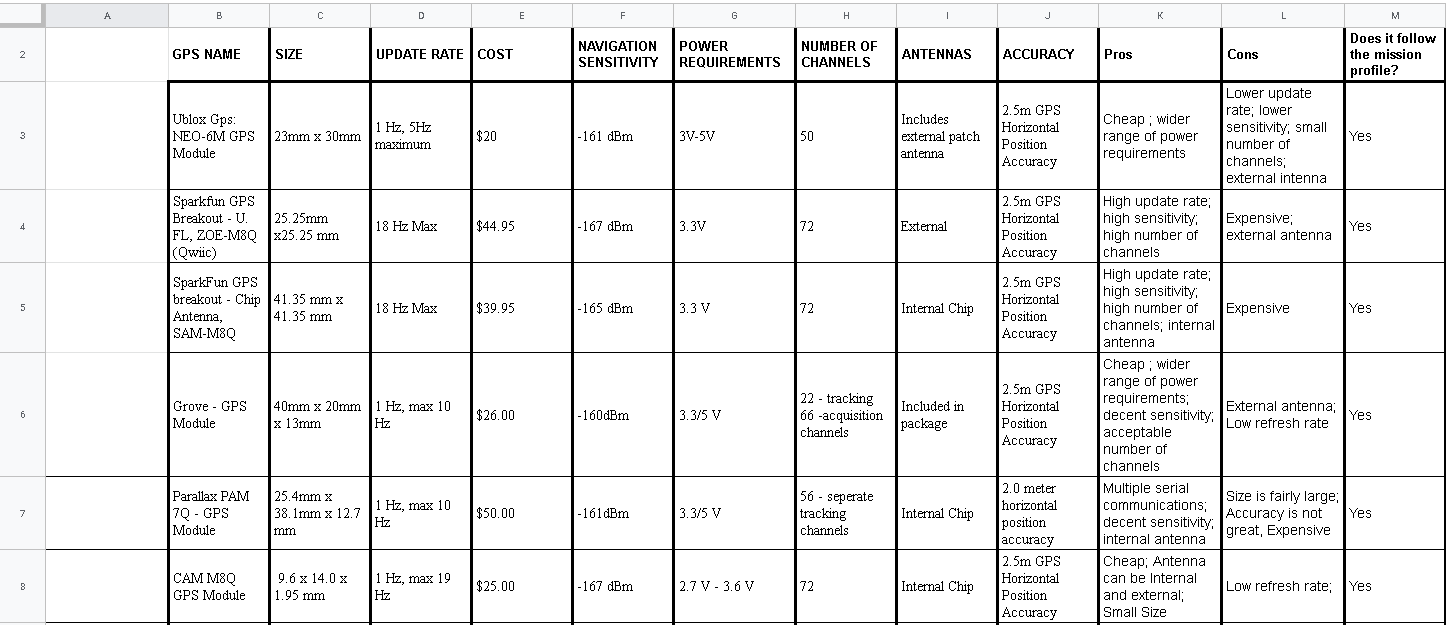Mini-Rosco / Spring 2020
GPS Module Trade Off Study
Author: Alex Margaris & Giann Bullo
Table of Contents
Introduction
In order to effectively, and within the time constraints placed on this project, design a custom GPS module that satisfies Mini-Rosco’s needs, research on existing modules was conducted. In this research, datasheets pertaining to certain modules were examined and cross correlated with the requirements of the Mini-Rosco Project.
Trade Off Study
The Mini-Rosco needs to have a GPS board that will be able to accurately display and record its location. Antennas are needed to pick up GPS L1 frequency and is crucial for optimal performance of the GPS. The better the antenna the better the signal it will be able to have indoors and outdoors. In this case we want the antennas to be embedded in the board to save space on the robot. The only GPS board that has a chip antenna is the SAM-M8Q from sparkfun. Other boards don’t have embedded antennas and instead are external. Another criteria for the breakout board was that the serial communication being used The last criteria had to be the sensitivity of the GPS board. Navigation sensitivity dictates how prone the GPS module will be able to capture the high frequency. The higher dBm determines how well the module will be able to pick up satellite signals.
In the beginning of the semester we compared the various GPS Modules, the group determined that the SparkFun GPS breakout – Chip Antenna, SAM-M8Q was chosen due to its high update rate, large number of channels, and internal, built in, antenna. The team believed this was the best choice to go with due to its features and price. When discussing it with Chris and Professor Hill, however, the board size was too big to fit on the 3Dot. This would result us in not putting it on the shield we planned to build in the future. After looking into other boards Chris was able to provide us with the Parallax Pam 7Q that fit our requirements and the 3Dot.
As the semester proceeded we realized that the GPS breakout board we used was not appropriate due to the fact that the GPS module was already a PCB. This led us to look back at the GPS Module Trade off study. By researching on the Ublox website we were able to find a replacement GPS module. It seems that the Pam 7Q module was an older model. Instead, we chose to go with the CAM M8Q module which was better in terms of size and functionality. This would be the module that would be used on the Mini-Rosco Shield.

